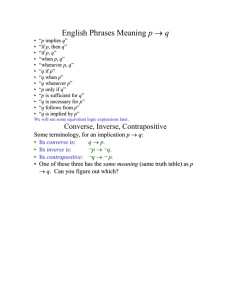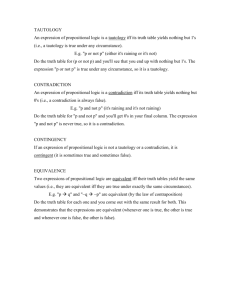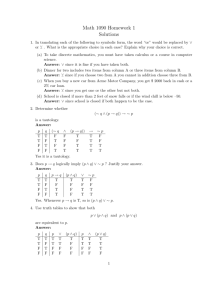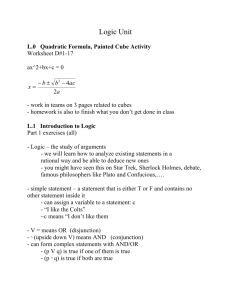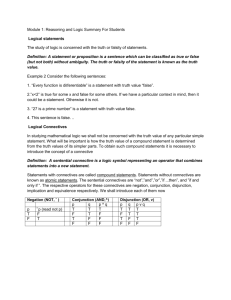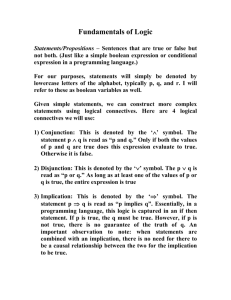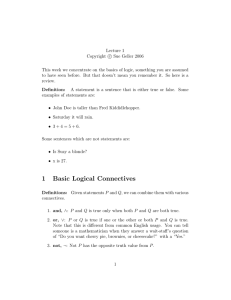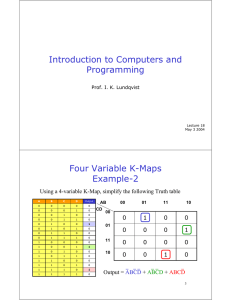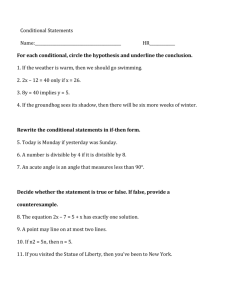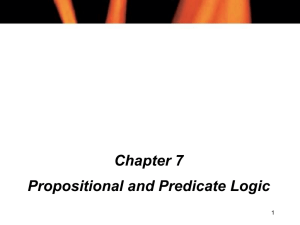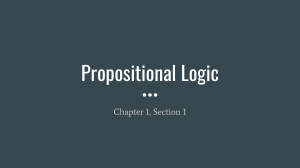Spring 2015 2.2
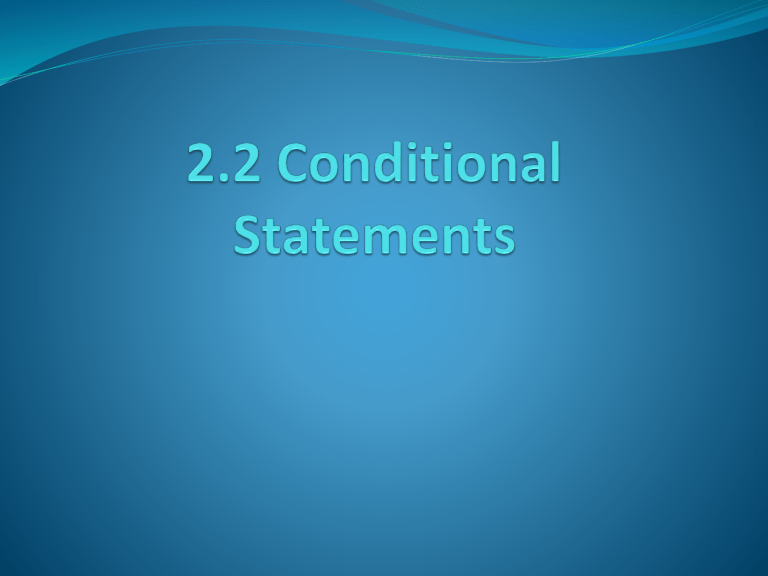
Conditional statement or implication
IF p then q is denoted p ⇒ q p is the antecedent or hypothesis q is the consequent or conclusion
⇒ means IF…THEN
To form the implication p: I am hungry q: I will eat p: It is snowing q: 3 + 5 = 8
IF I am hungry, THEN I will eat
IF it is snowing, THEN 3+5=8
Normally you would use statements that have cause and effect.
IF p then q (p ⇒ q) is only considered false if p is true and q is false. p = t , q = f results in F p q p ⇒ q
T T T
T
F
F
F
T
F
F
T
T
IF p then q: p ⇒ q means all of the following: p implies q q if p p only if q p is a sufficient condition for q q is a necessary condition for p
Converse of p ⇒ q is the implication q ⇒ p (IF q then p)
Contrapositive of p ⇒ q is the implication q ⇒ p (if not q then not p)
IF it is raining, THEN I get wet p: It is raining q: I get wet
Converse q ⇒ p (if q then p)
IF I get wet, THEN it is raining
Contrapositive q ⇒ p (if not q then not p)
IF I do not get wet, then it is not raining
Equivalence or bi conditional
⇔ IF and only IF
p ⇔ q (p if and only if q) is only true when both p and q are true or when both p and q are false p q p ⇔ q
T T T
T F
F T
F
F
F F T
3 >2 IF and only IF 0 < 3-2
p: 3 >2
q: 0 < 3-2
p ⇔ q (p if and only if q) is true because p is true and q is true.
A statement that is true for all possible values of its propositional variables is called a tautology. In other words, if the result column only has T’s in it, the statement is a tautology.
Review Tautology handout
Contradiction or Absurdity: is a statement that is always fasle: p ∧ p (p and not p) will always have a result of false.
Contingency: a statement that can either be true or false, depending on the truth values of its propositional variables. (p ⇒ q) ∧ (p ∨ q)
Logically equivalent is denoted by ≡
IF p ⇔ q is a tautology then the two propositions are equal.
Page 58 correction
Last paragraph in example 6 the second & third should be third & fourth
Review Page 59 properties
Page 60:
∀ means for all
∃ means there exists
